8 Top & Safe Hamster Bedding Alternatives
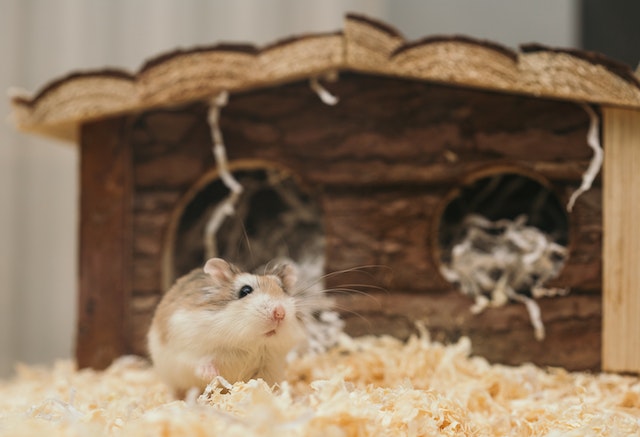
Hey there, hamster lovers! Are you tired of the same old bedding options for your furry friends? Well, you’re in luck because today we’re diving into the exciting world of hamster bedding alternatives.
We all want our little fluffballs to have the comfiest and safest sleeping environment, right? So why not explore some creative options that go beyond the traditional choices?
From cozy fabrics to natural materials, we’ve got you covered. Get ready to discover some game-changing bedding ideas that will make your hamster’s snooze time even more enjoyable. Let’s jump right in!
Hamster Bedding Alternatives
The following are some common hamster bedding alternatives:
1. Shredded Cardboard
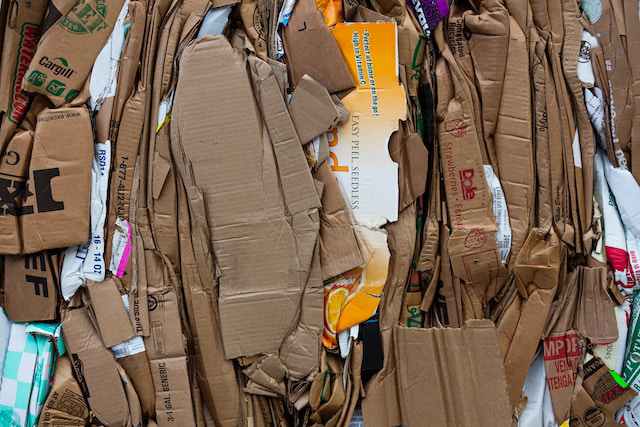
Shredded cardboard can be a safe and effective alternative for hamster bedding. It provides a soft and cozy environment for your furry friend and is readily available and affordable.
Here are the steps to make shredded cardboard as a hamster bedding alternative:
- Gather cardboard: Collect clean and dry cardboard boxes or sheets. Ensure that the cardboard is free from any adhesives or chemicals that could harm your hamster.
- Remove any tape or labels: Take off any tape, stickers, or labels from the cardboard. These items can be hazardous to your hamster’s health if ingested.
- Cut the cardboard: Use a pair of scissors or a paper shredder to cut the cardboard into small strips or pieces. Aim for strips that are around 1-2 inches wide.
- Shred the cardboard: Once you have cut the cardboard into strips, shred them into smaller pieces. This can be done by hand or using a paper shredder. Make sure the pieces are not too long or thick, as this may pose a choking hazard for your hamster.
- Prepare the bedding area: Clear out your hamster’s cage or enclosure and make sure it is clean and dry. Remove any old bedding or substrate.
- Add the shredded cardboard: Sprinkle a generous amount of shredded cardboard onto the bottom of the cage to create a comfortable layer for your hamster to burrow and nest in. Make sure to provide enough bedding for your hamster to dig and create tunnels.
To clean and change shredded cardboard bedding:
- Spot clean: Regularly remove any soiled or wet cardboard pieces from the bedding using a small scooper or by hand.
- Freshen up: As needed, add freshly shredded cardboard to replace any dirty or soiled areas. This will help maintain a clean and hygienic environment for your hamster.
- Deep clean: Every few weeks, completely remove all the shredded cardboard bedding and clean the cage thoroughly with a pet-safe disinfectant. Ensure that the cage is fully dry before adding fresh bedding.
Remember to monitor your hamster’s behavior and health regularly. Some hamsters may have allergies or sensitivities to certain bedding materials, so it’s essential to observe any signs of discomfort or respiratory issues. Always prioritize your hamster’s safety and well-being when selecting and maintaining their bedding.
2. Shredded Paper

Shredded paper can be a safe and effective alternative for hamster bedding. Not only is it readily available, but it also provides a soft and comfortable environment for your furry friend.
Here are the steps to make shredded paper as hamster bedding and how to clean and change it:
- Gather the materials: You will need a stack of plain, unprinted paper, preferably newspaper or non-glossy paper. Avoid using paper with ink that could potentially harm your hamster.
- Shred the paper: Start by tearing the paper into small strips. You can use a paper shredder for this task, or simply tear the paper by hand. Make sure the strips are approximately half an inch wide.
- Fluff and crumple the paper: Once you have a pile of shredded paper strips, fluff them up and crumple them slightly to create a soft and cozy bedding material. This will give your hamster a comfortable surface to burrow and nest in.
- Place the shredded paper in the cage: Line the bottom of your hamster’s cage with a layer of shredded paper. Make sure to create a thick enough layer to provide insulation and cushioning. Hamsters love to burrow, so a depth of around 2-3 inches should be sufficient.
Cleaning and changing shredded paper bedding:
- Spot cleaning: Regularly remove any soiled or wet areas from the shredded paper bedding. This will help maintain a clean and odor-free cage. Replace the removed paper with fresh shredded paper.
- Full cage cleaning: Every 1-2 weeks, it’s important to thoroughly clean your hamster’s cage. Remove all of the shredded paper bedding and discard it. Clean the cage with a mild pet-safe disinfectant and rinse it thoroughly. Allow the cage to dry completely before adding fresh shredded paper bedding.
- Preventing odors: To minimize odors, you can sprinkle a small amount of baking soda or odor-neutralizing pet bedding sprinkles over the shredded paper bedding. This can help absorb any unpleasant smells and keep the cage fresh.
3. Shredded Toilet Paper
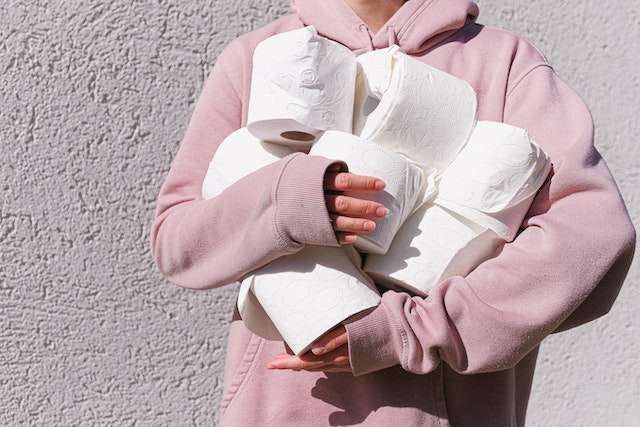
Shredded toilet paper can indeed serve as a safe and effective bedding alternative for hamsters. It provides a soft and comfortable environment for them to burrow and nest in.
Here are the steps to make shredded toilet paper as hamster bedding:
- Gather the materials: You will need a roll of unscented, non-bleached toilet paper. Ensure that the toilet paper is free from any added fragrances or chemicals, as these can be harmful to your hamster.
- Unroll the toilet paper: Start by unrolling a few sheets of toilet paper from the roll. It’s important to use a sufficient amount to create a thick and cozy bedding layer.
- Shred the toilet paper: Carefully tear the unrolled sheets of toilet paper into smaller pieces, creating soft and fluffy shreds. You can tear them into strips or crumple them into small balls, depending on your hamster’s preference.
- Create the bedding layer: Once you have enough shredded toilet paper, spread it evenly across the bottom of your hamster’s cage. Aim for a layer that is at least a few inches thick to provide ample cushioning for your hamster.
Now, let’s move on to how to clean and change shredded toilet paper as hamster bedding:
- Spot clean regularly: Hamsters tend to use specific areas of their cage for urination and defecation. Check these spots daily and remove any soiled or dirty shredded toilet paper promptly to maintain cleanliness.
- Weekly deep clean: Once a week, remove all of the shredded toilet paper bedding and replace it with fresh bedding. This helps to keep your hamster’s living environment clean and hygienic.
- Dispose of old bedding: Place the used shredded toilet paper in a waste bag or bin and dispose of it properly. Make sure to follow your local waste disposal guidelines.
- Sanitize the cage: Before adding the fresh shredded toilet paper bedding, clean the cage thoroughly with a pet-safe disinfectant. This helps to eliminate any bacteria or odors, ensuring a healthy environment for your hamster.
Remember, the well-being of your hamster is of utmost importance. Regularly monitoring and maintaining the cleanliness of their bedding will contribute to their overall health and happiness.
4. Shredded Newspapers

Shredded newspaper can be a safe and effective bedding alternative for hamsters. It provides a soft and comfortable surface for them to burrow and nest in. Additionally, it is readily available and inexpensive.
Making shredded newspaper as a hamster bedding alternative:
- Start by collecting a sufficient amount of newspaper. Make sure the newspaper is free from any toxic ink or chemicals that may harm your hamster.
- Tear the newspaper into thin strips or shred it into small pieces. You can use a paper shredder or simply tear it by hand.
- Avoid using large pieces of newspaper, as they can be difficult for your hamster to move around and burrow in. Smaller strips or pieces will be easier for them to manipulate.
- Spread a layer of the shredded newspaper on the floor of your hamster’s cage to create a comfortable bedding area. The thickness of the bedding should be enough to allow your hamster to burrow and nest.
- Ensure that the bedding is clean and dry before placing it in the cage. Avoid using newspaper that has been soiled or damp, as it can promote the growth of bacteria or cause unpleasant odors.
Cleaning and changing shredded newspaper bedding:
- Regularly check the bedding for any signs of soiling or odor. Hamsters tend to use specific areas of the cage as their bathroom, so focus on those areas when cleaning.
- Remove any soiled or wet bedding immediately to maintain a clean and hygienic environment for your hamster.
- To clean the bedding, you can simply scoop out the soiled parts using a small shovel or scoop. Dispose of the dirty bedding in a trash bag or compost bin.
- It is recommended to replace the entire bedding once a week or as needed, depending on the cleanliness and odor level. This will ensure that your hamster has a fresh and sanitary environment to live in.
- When replacing the bedding, repeat the process of making shredded newspaper as mentioned earlier, and spread a new layer in the cage.
5. Coconut Fiber
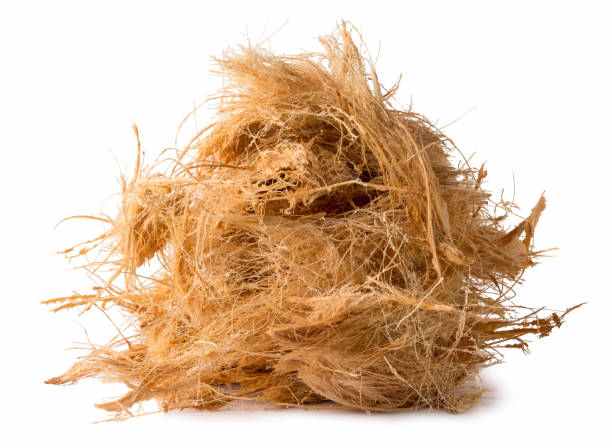
Coconut fiber, also known as coir, can be a safe and effective alternative for hamster bedding. It is a natural and sustainable option that provides a comfortable and cozy environment for your furry friend.
Here are the steps to make coconut fiber a hamster bedding alternative:
- Purchase coconut fiber: You can find coconut fiber in pet stores or online. Look for high-quality, organic coconut fiber that is free from any additives or chemicals.
- Prepare the coconut fiber: Start by soaking the coconut fiber in water for a few hours. This will help to soften it and remove any excess dust. After soaking, drain the water and squeeze out any excess moisture. Fluff up the fiber to make it more comfortable for your hamster.
- Create the bedding area: Clear out the hamster cage and remove any existing bedding. Spread a layer of coconut fiber on the bottom of the cage, ensuring it is at least 1-2 inches deep. This will provide a soft and absorbent surface for your hamster to burrow and nest in.
- Add nesting material: Hamsters love to create cozy nests, so you can provide additional nesting material along with the coconut fiber. Shredded paper, unscented tissue, or hay can be added to the bedding area, allowing your hamster to construct its own comfortable nest.
Cleaning and changing coconut fiber bedding:
- Spot cleaning: Regularly check the bedding for any soiled areas, and remove them promptly. Use a small scoop or spoon to remove any droppings or wet spots. This will help to maintain a clean and hygienic environment for your hamster.
- Regular maintenance: Every few days, lightly fluff up the coconut fiber bedding to prevent it from becoming compacted. This will also help to redistribute any odors and keep the bedding fresh.
- Full bedding change: Depending on your hamster’s habits and the condition of the bedding, a complete bedding change may be necessary every 2-4 weeks. Remove all the coconut fiber from the cage and replace it with fresh bedding. Make sure to thoroughly clean and disinfect the cage before adding the new bedding.
Remember to monitor your hamster’s behavior and health while using coconut fiber bedding. Some hamsters may have sensitivities to certain types of bedding, so it’s important to observe any signs of discomfort or allergies.
By following these steps, you can provide your hamster with a safe and cozy environment using coconut fiber as a bedding alternative.
6. Hay-Based Bedding
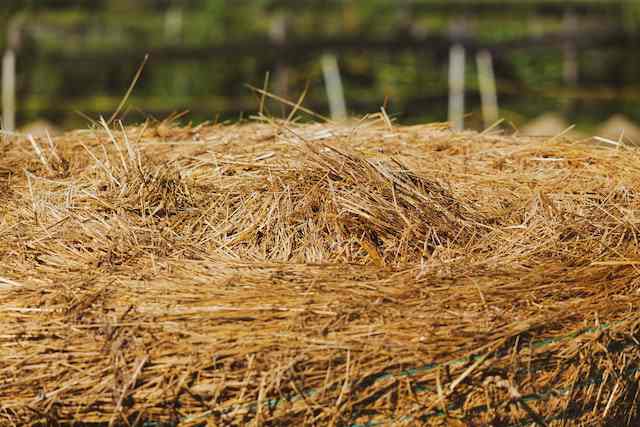
Hay-based bedding is a safe and effective alternative for hamsters, providing them with a comfortable and natural environment. Hay is readily available and inexpensive, making it an accessible option for hamster owners.
Here are the steps to make and maintain hay-based bedding for your furry friend:
- Select high-quality hay: Choose a type of hay that is safe for hamsters, such as Timothy hay or orchard grass. Avoid hay that is dusty or moldy, as it can be harmful to your hamster’s respiratory system.
- Prepare the bedding area: Clear a space in your hamster’s enclosure for the bedding. Ensure that it is free from any potential hazards or sharp objects.
- Spread a layer of hay: Take a handful of hay and spread it evenly across the bedding area. The layer should be thick enough to provide cushioning and insulation for your hamster.
- Add nesting material: Hamsters love to burrow and create nests. Place additional hay or nesting material on top of the hay-based bedding to provide your hamster with a cozy hiding spot.
- Monitor cleanliness: Regularly check the hay-based bedding for any signs of soiling or dampness. Hamsters can be messy, so it’s essential to maintain cleanliness to prevent odor and potential health issues.
- Spot clean as needed: Remove any soiled or wet hay from the bedding area using a scooper or tongs. Replace it with fresh hay to maintain a clean and hygienic environment.
- Full bedding change: Every few weeks, completely change the hay-based bedding. Remove all the old hay and replace it with fresh hay. This will help prevent the buildup of bacteria and odors.
- Provide enrichment: Along with the hay-based bedding, it’s essential to provide your hamster with toys, tunnels, and other enrichment items. This will keep them mentally stimulated and prevent boredom.
By following these steps, you can create a safe and comfortable hamster bedding alternative using hay. Remember to monitor cleanliness regularly and provide your hamster with a clean and enriching environment to ensure their well-being.
7. Paper Pellets
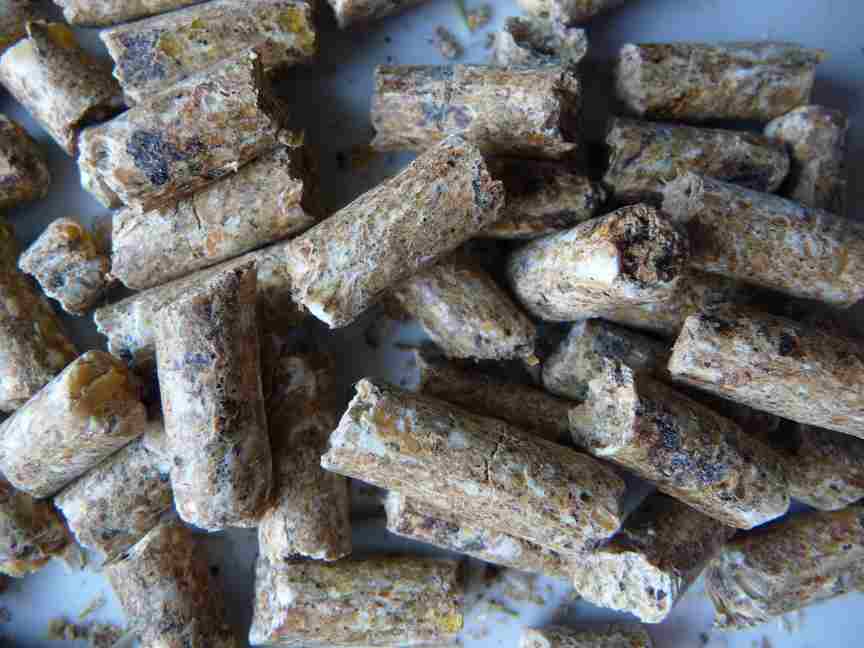
Paper pellets are a safe and effective alternative for hamster bedding. They are made from recycled paper and provide a soft and comfortable environment for your hamster. Using paper pellets as bedding also helps reduce waste and is environmentally friendly.
To make paper pellets as a hamster bedding alternative, follow these steps:
- Gather materials: You will need shredded paper, a blender or paper shredder, a large bowl, water, and a strainer.
- Shred the paper: If you have a paper shredder, run the paper through it until you have a good amount of shredded paper. If you don’t have a shredder, tear the paper into small pieces by hand.
- Soak the paper: Place the shredded paper in a large bowl and add enough water to cover it. Let it soak for about 30 minutes to soften the paper fibers.
- Blend the paper: After soaking, drain the water from the bowl and transfer the softened paper to a blender. Blend the paper until it turns into a pulp-like consistency. If you don’t have a blender, you can skip this step and move to the next one.
- Shape the pellets: Take small handfuls of the paper pulp and squeeze out any excess water. Roll the damp pulp into small pellets, about the size of a marble. Place the pellets on a clean, dry surface and let them dry for a couple of days until they are completely dry and firm.
Now that you have your paper pellets ready, here’s how to clean and change them in your hamster’s cage:
- Spot clean daily: Remove any soiled or wet pellets from your hamster’s cage on a daily basis. This will help maintain a clean and odor-free environment for your pet.
- Weekly cleaning: Once a week, remove all the paper pellets from the cage and replace them with fresh ones. Use a small scoop or your hands to remove the pellets and discard them.
- Disinfect the cage: While the pellets are removed, take the opportunity to clean and disinfect the hamster’s cage. Use a mild pet-safe detergent and warm water to clean the cage thoroughly. Rinse it well and ensure it is completely dry before adding fresh paper pellets.
- Add fresh paper pellets: Once the cage is clean and dry, add a fresh layer of paper pellets to the cage. Ensure that the layer is thick enough to provide sufficient bedding for your hamster to burrow and nest in.
By regularly cleaning and changing the paper pellets, you can maintain a clean and comfortable environment for your hamster. Remember to monitor your pet’s behavior and adjust the bedding as needed to ensure their health and well-being.
8. Fabric Strips
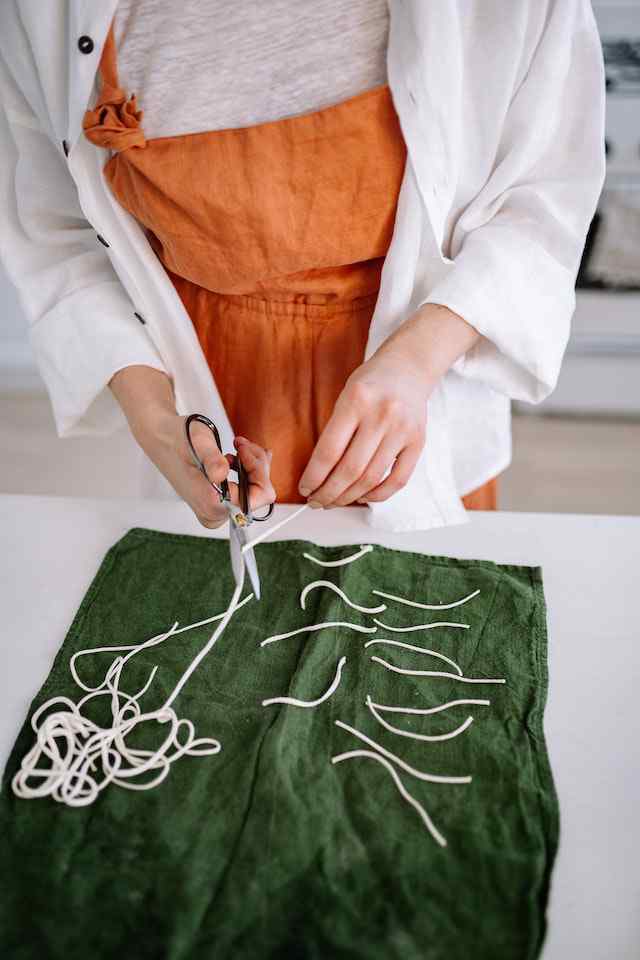
Fabric strips can be a safe and effective alternative to traditional hamster bedding. They provide a cozy and comfortable environment for your hamster while also being environmentally friendly.
Here are the steps to make fabric strips as a hamster bedding alternative:
- Choose the fabric: Select a soft, non-toxic, and absorbent fabric for your hamster’s bedding. Avoid using fabrics that have loose threads or are prone to fraying.
- Cut the fabric into strips: Cut the fabric into long, thin strips. The width of the strips can vary depending on your preference, but a good starting point is around 1-2 inches wide. The length of the strips should be long enough to cover the entire floor of your hamster’s habitat.
- Wash the fabric: Before using the fabric strips as bedding, it’s important to wash them to remove any chemicals or residues. Use a mild, fragrance-free detergent and rinse thoroughly to ensure the fabric is clean and safe for your hamster.
- Line the habitat: Once the fabric strips are clean and dry, line the bottom of your hamster’s habitat with a layer of the strips. Make sure to cover the entire floor to provide a comfortable surface for your hamster to walk and burrow on.
To clean and change the fabric strips:
- Spot clean: Regularly check the fabric strips for any soiled areas and remove them. Spot clean any stains or wet spots using a mild detergent and warm water. Rinse thoroughly and allow the fabric to dry completely before placing it back in the habitat.
- Regular maintenance: Every few days, shake out the fabric strips or gently vacuum them to remove any accumulated debris or droppings.
- Washing: Depending on the level of soiling, you may need to wash the fabric strips periodically. Follow the same washing process as mentioned earlier, using a mild detergent and rinsing thoroughly. It’s important to ensure the fabric is completely dry before reintroducing it to your hamster’s habitat to prevent mold or mildew growth.
- Replace as needed: Over time, the fabric strips may become worn or heavily soiled. If this happens, it’s best to replace them with fresh strips to maintain a clean and comfortable environment for your hamster.
By following these steps, you can create and maintain a safe and cozy bedding alternative for your hamster using fabric strips.
Learn more about hamster enrichment tips.
Related Questions
What are some alternatives to traditional bedding for my hamster?
There are a few alternatives you can consider. Some popular options include shredded paper, unscented tissue paper, aspen shavings, and coconut fiber bedding.
Are these alternative beddings safe for my hamster?
Yes, most of these alternatives are safe for your hamster. However, it’s important to avoid using cedar or pine shavings, as the aromatic oils in these types of wood can be harmful to your furry friend’s respiratory system.
How often should I change the bedding in my hamster’s cage?
It’s recommended to change your hamster’s bedding once a week. However, you may need to change it more frequently if you notice any odors or if the bedding becomes soiled.
Can I use fabric or cloth as bedding for my hamster?
While fabric or cloth may seem cozy, it’s not the best option for hamster bedding. Hamsters tend to chew on fabric, which can lead to digestive issues or even blockages. It’s best to stick with safe and appropriate bedding materials.
What should I look for when choosing bedding alternatives for my hamster?
When selecting bedding alternatives, make sure they are dust-free, absorbent, and non-toxic. Avoid using materials with strong scents or chemicals that could irritate your hamster’s delicate respiratory system.
Can I mix different types of bedding for my hamster?
Yes, you can mix different types of bedding to create a comfortable and suitable environment for your hamster. Just make sure to avoid any bedding materials that may be harmful or cause discomfort to your pet.
Learn more about how to care for a hamster.
Conclusion
In conclusion, when it comes to finding the perfect bedding for your furry friend, don’t be afraid to think outside the cage! While traditional options like wood shavings and paper bedding are popular, there are plenty of alternative choices that can provide comfort and enrichment for your hamster.
From shredded paper and tissue to coconut fiber and even fleece blankets, the options are endless. So, get creative and experiment with different alternatives to find what works best for your little ball of fluff. Remember, a happy hamster is a healthy hamster!
